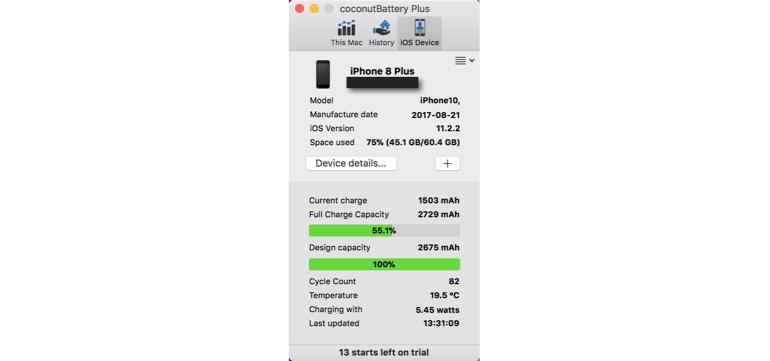
Video: How to check if your iPhone battery needs to be replaced
If you’ve recently bought a new iPhone, then you might be looking on at the whole iPhone throttling debacle that Apple has found itself embroiled in and think that you’ve dodged a bullet. But the battery inside your new iPhone might be worn out in under a couple of years.
Must read: How to tell if your iPhone battery needs replacing
OK, first, a little about the battery inside the iPhone. According to Apple, the battery “is designed to retain up to 80 percent of its original capacity at 500 complete charge cycles,” and beyond that, the battery is considered worn and heading toward end-of-life. Some batteries can and do retain more than 80 percent charge after well over 500 recharge cycles (I have an iPhone 6 Plus with over 800 recharge cycles that’s still above the 80 percent mark), but in my experience, once you hit 500 recharge cycles, your battery is on borrowed time.
So ideally, you need to ration out those 500 recharges over the life of the device. However, you additionally need to bear in mind that as the battery gets older, it won’t last as long, so your recharge frequency is going to increase as your device gets older.
Now, in my opinion, two of the best features of the iPhone X and iPhone 8 are fast charging and wireless charging. They’ve essentially eliminated the low-grade anxiety that I’d feel when my battery was getting below 50 percent during the day. Pop the iPhone on a wireless pad or hook it up to a fast charger and it’s always ready for action.
But the ability to easily recharge the iPhone masks a nagging feeling I’ve had about Apple’s latest crop of iPhones — that the battery life is far from good. And I’m saying that as an iPhone 8 Plus user, which is listed as having the best battery life (at least with regard to internet use, which is what I use it for the most) of the newest iPhones.
So the other day, on a whim, I decided to check out how many recharge cycles my iPhone had been through in the less than four months I’ve had it and I was horrified to discover that I was already at 82, and that this had increased to 91 by the point I’d owned it four months (I got my iPhone 8 Plus on launch day).

My iPhone 8 Plus after less than four months usage
Note: I used the excellent macOS app CoconutBattery to get access to the iPhone’s battery recharge cycle count.
If I’ve gone through 91 recharge cycles in four months, that means that I could easily hit the 455 recharge cycles after about 20 months of ownership, and since that’s not allowing for any battery wear, I’m realistically expecting that the battery inside my iPhone to hit the 500 cycles mark in about 18 months.
18 months.
Previously I would have expected an iPhone to make it closer to the 36-month/three-year mark before hitting the 500 recharge cycle (working out as a full recharge every couple of days or so).
That’s scary, doubly so when I consider that this iPhone hasn’t been heavily used in the four months that I’ve had it (I’ve been switching between older devices a lot as part of the testing I do).
And it’s not just me. I’ve heard from other iPhone X and iPhone 8 owners who tell me that their battery recharge cycles are in a similar ballpark.
So what’s going on here?
It seems that Apple adding the speed and convenience of wireless and fast charging is masking the fact that newer iPhones are placing quite a heavy demand on battery life, and that the device — even the larger Plus devices — are needing to be topped up more regularly than older devices, and that this will wear out the battery even faster than we’ve seen previously.
If you upgrade every year, this isn’t going to be a problem for you, but if you’re the kind of person who likes to get a few years out of their iPhone before getting a new one, this is something that you need to think about. You either need to take measures to minimize battery usage during the day, or plan for a battery replacement down the line.
See also:

